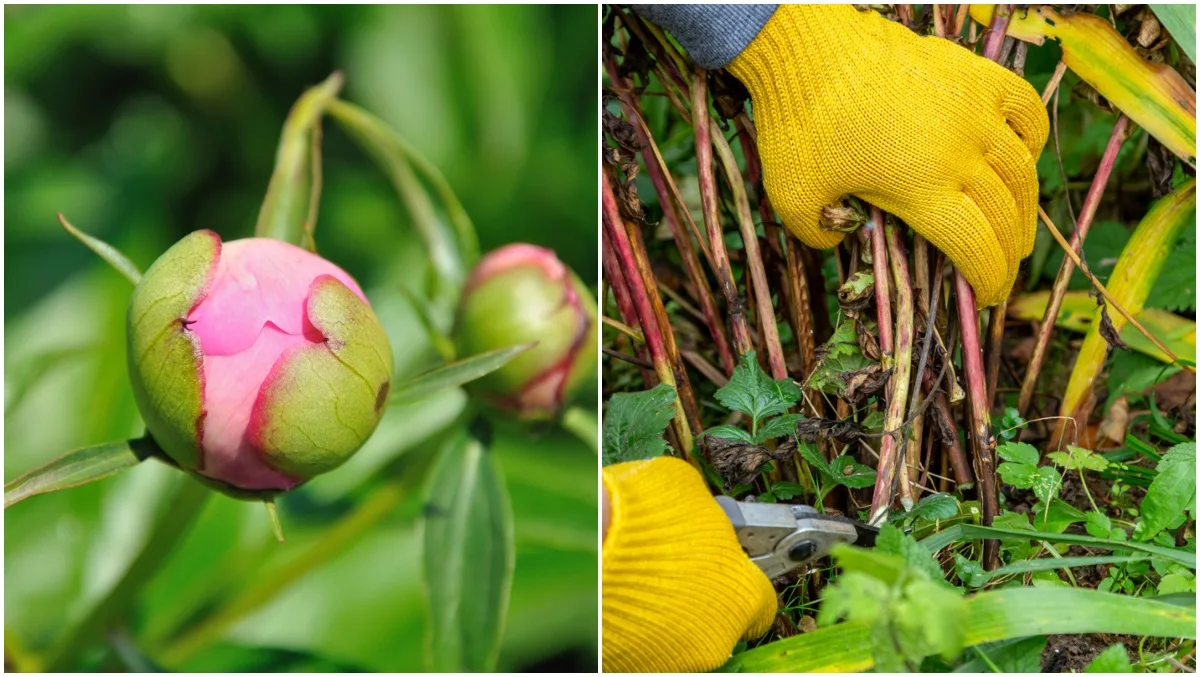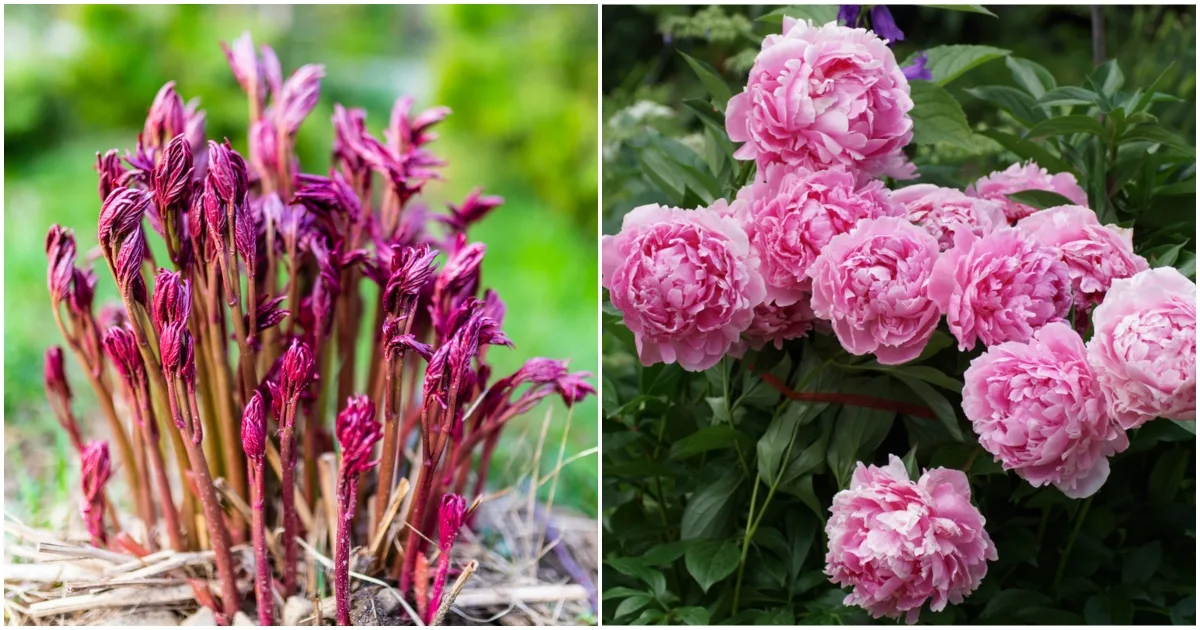
When asked whether she loved or hated peonies, one of my gardening friends (who had been growing peonies for a couple of decades) replied simply “yes.” And it made perfect sense!
How can you not love peonies?
Their showy colorful blooms would make any plant-skeptic fall in love. One of the frustrations of growing peonies comes from their susceptibility to diseases such as bacterial leaf spot and fungal rust. And peonies can be capricious bloomers if they’re not properly fertilized.
Here is our short guide on best practices to fertilize peonies in spring for bigger showstopping blooms.
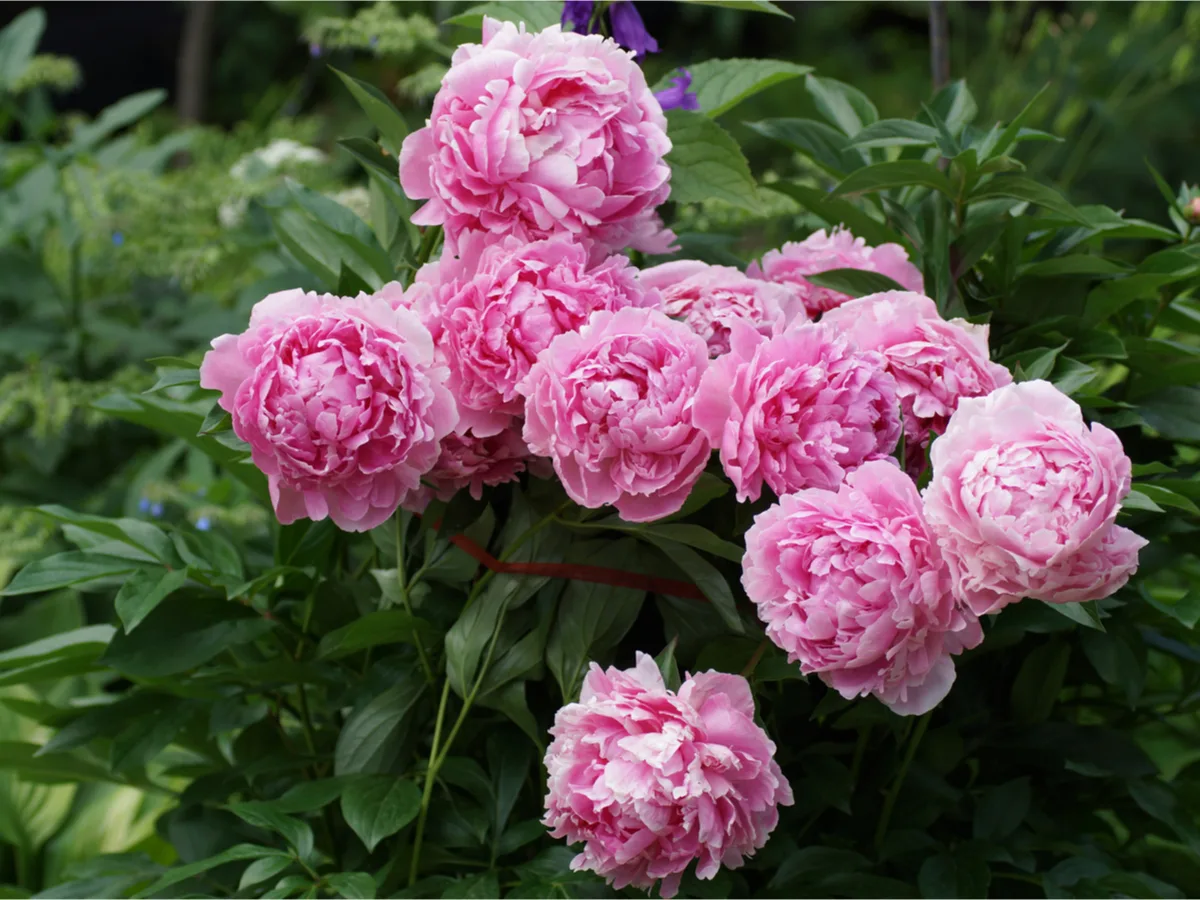
When should I fertilize peonies?
First of all, let’s talk about when you should not fertilize your peonies.
Experts at the North Carolina University Cooperative Extension go as far as recommending not fertilizing peonies until they’ve been in the ground for at least five years.
But other experts believe that by the third year the plant should be established enough to handle light fertilizing. Most peony varieties may not bloom during their first spring and may only bloom sporadically the second year.
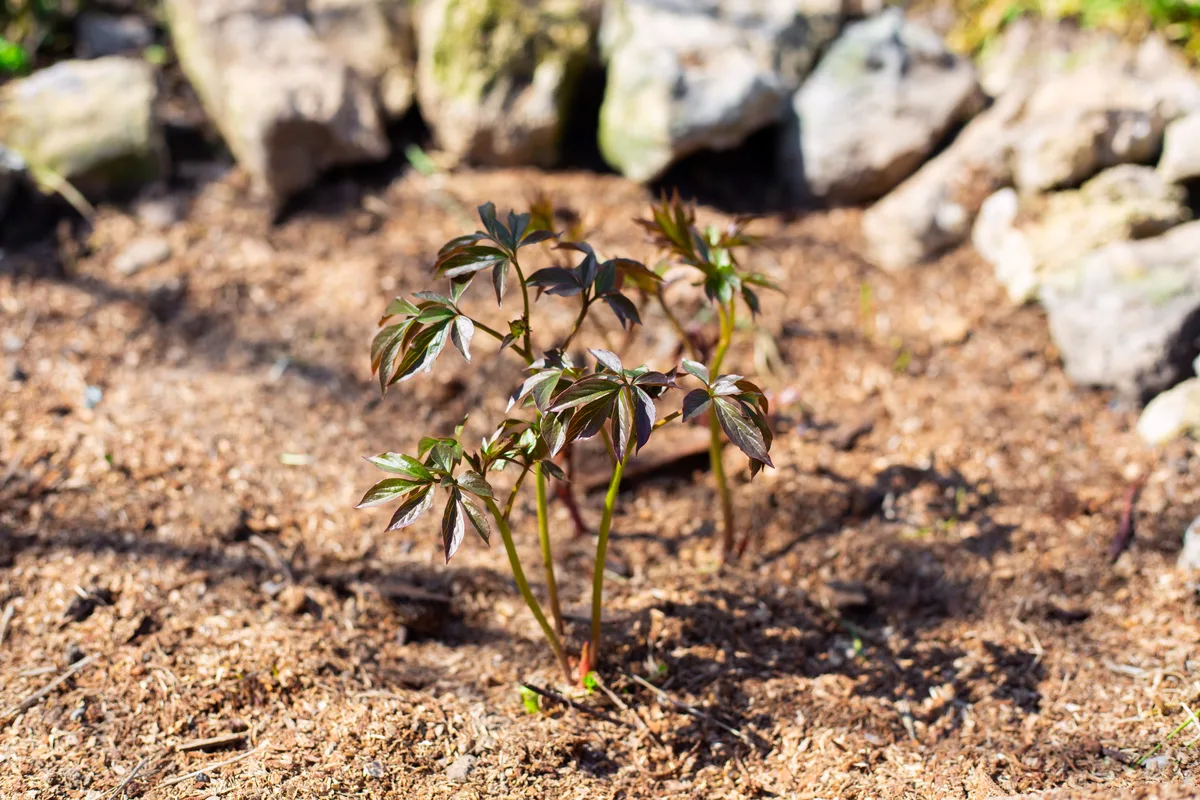
In fact, if your peony blooms in its first year, you can remove the flower buds to allow the plant to maximize its root and leaf growth in its first growing season. I know chopping off baby blooms doesn’t sound like too much fun, but think of it as an investment in the future wellbeing of your mature peony plants.
Once your peonies are established, there are two main periods when you should fertilize them: pre-bloom and post-bloom. In most climates, this translates to early spring and late summer (or early fall).
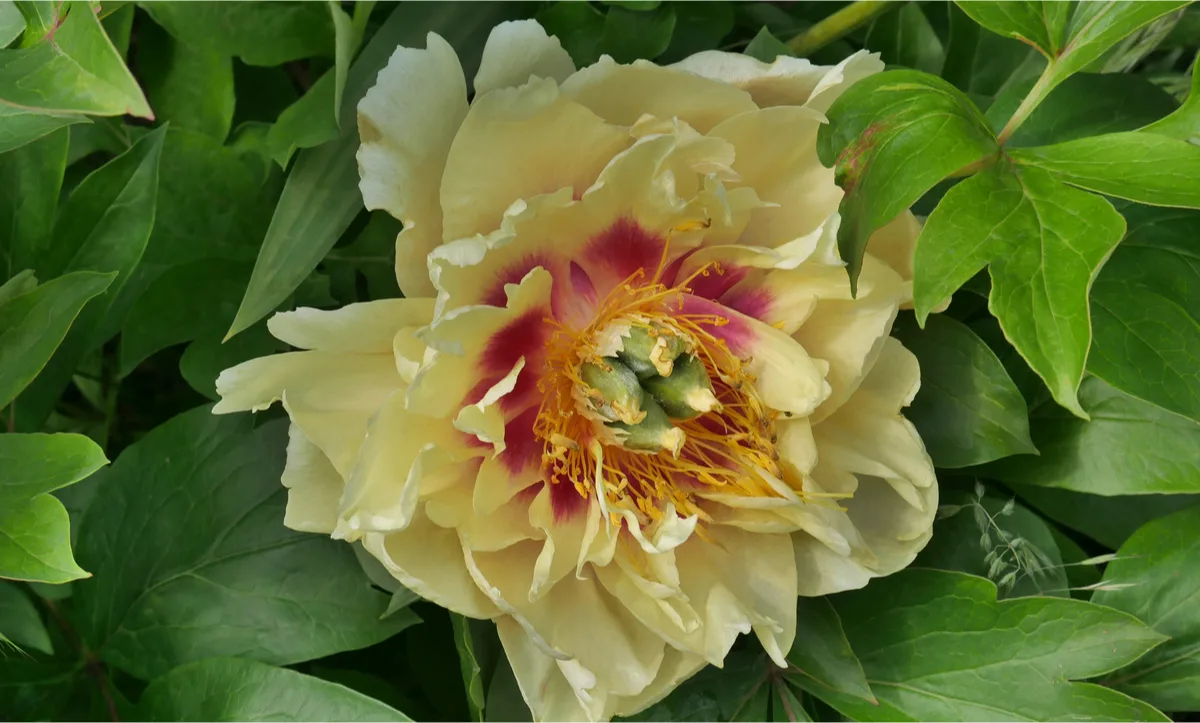
In the spring, your peonies expend a lot of energy pushing out new foliage and preparing for blooms. When they start setting blooms, they need a lot of food readily available.
Think of your peonies as lanky teenagers that are going through a growth spurt and will eat you out of house and home. The best time to apply peony fertilizer in the spring is when the stems are about one foot tall (around 30 cm).
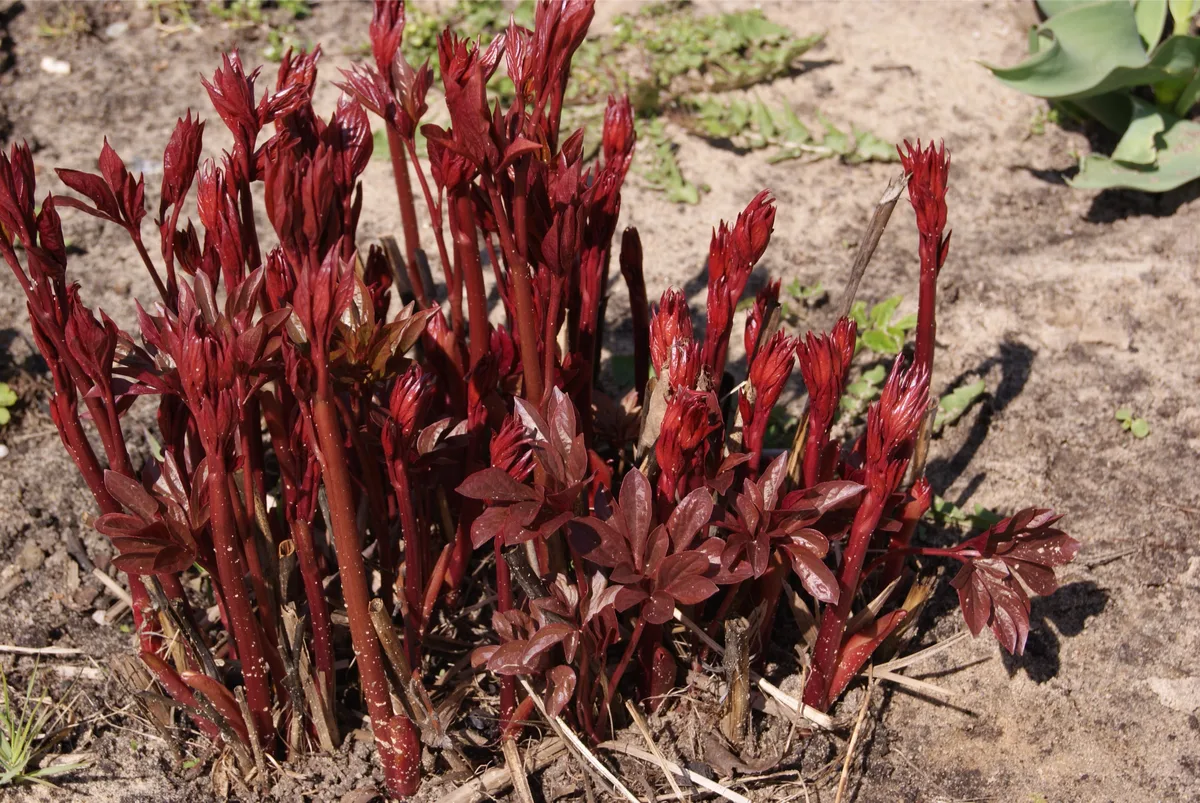
In the fall, the plants are storing the energy and nutrients needed for the blooms and foliage that will push out the following year.
What kind of fertilizer should I use for my peonies?
There are quite a few choices of fertilizer that you can use for your peonies:
1. Fertilize peonies with organic compost.
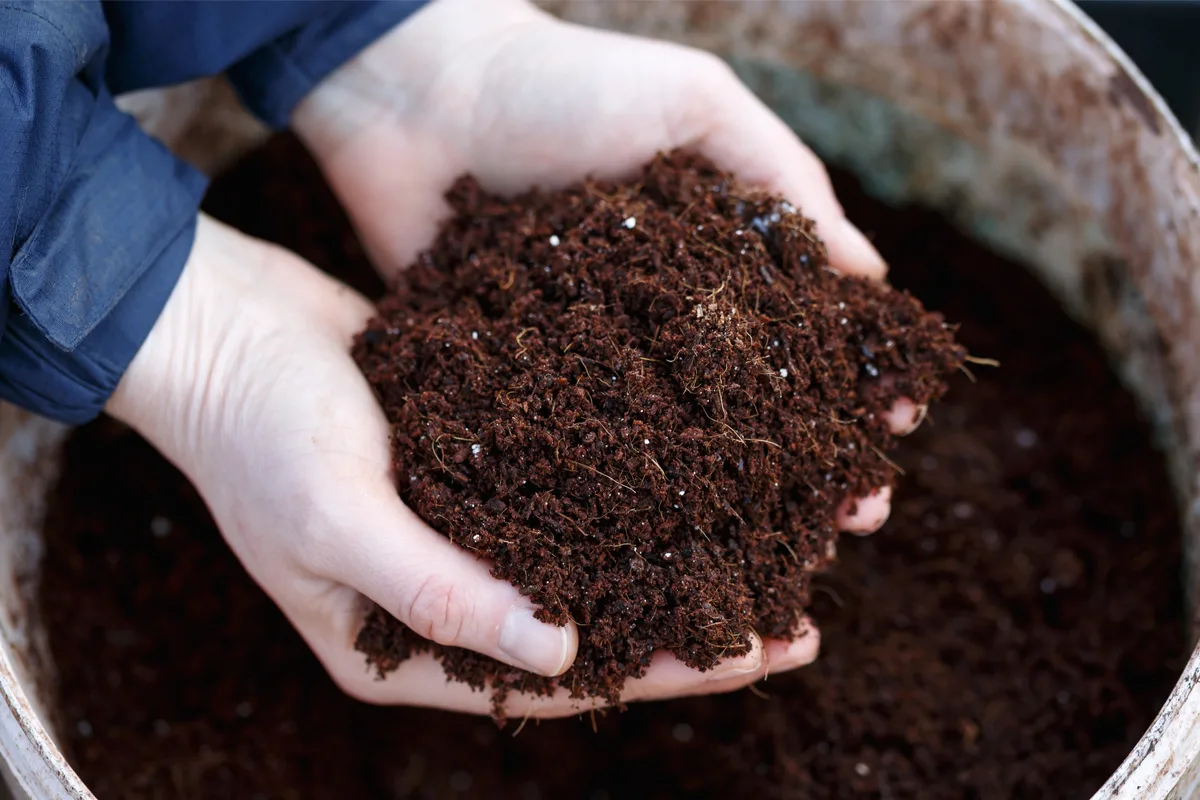
Sprinkle a handful of finished compost in a circle around the drip line of your plant. Peony plants don’t like to be buried too deep, so keep the compost layer light and avoid compaction.
You should apply this top-dressing of compost very early in the spring.
If you have your own compost pile, then you’re off the hook. If you don’t have your own source of homemade compost, you can purchase some from your local gardening store, making sure that it doesn’t have any extra added nitrogen (more about this later).
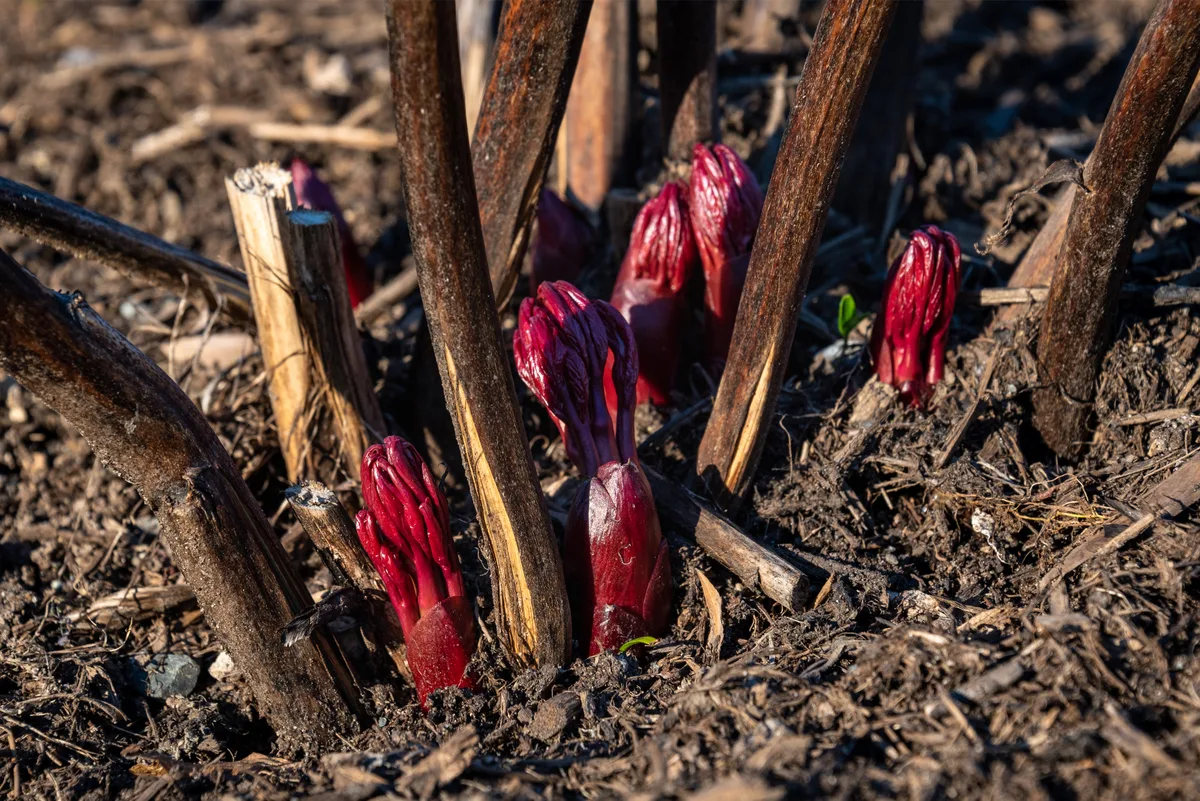
2. Fertilize peonies with slow release organic fertilizer.
Apply the slow release organic fertilizer at least a month before the blooms make their appearance. This Lily Miller Bulb & Bloom Food is a great option.
Sprinkle it lightly around the drip line of the plant (where the feeder roots are) and gently work it into the ground using a hand rake or your fingers. (Make sure to wear sturdy gardening gloves.)
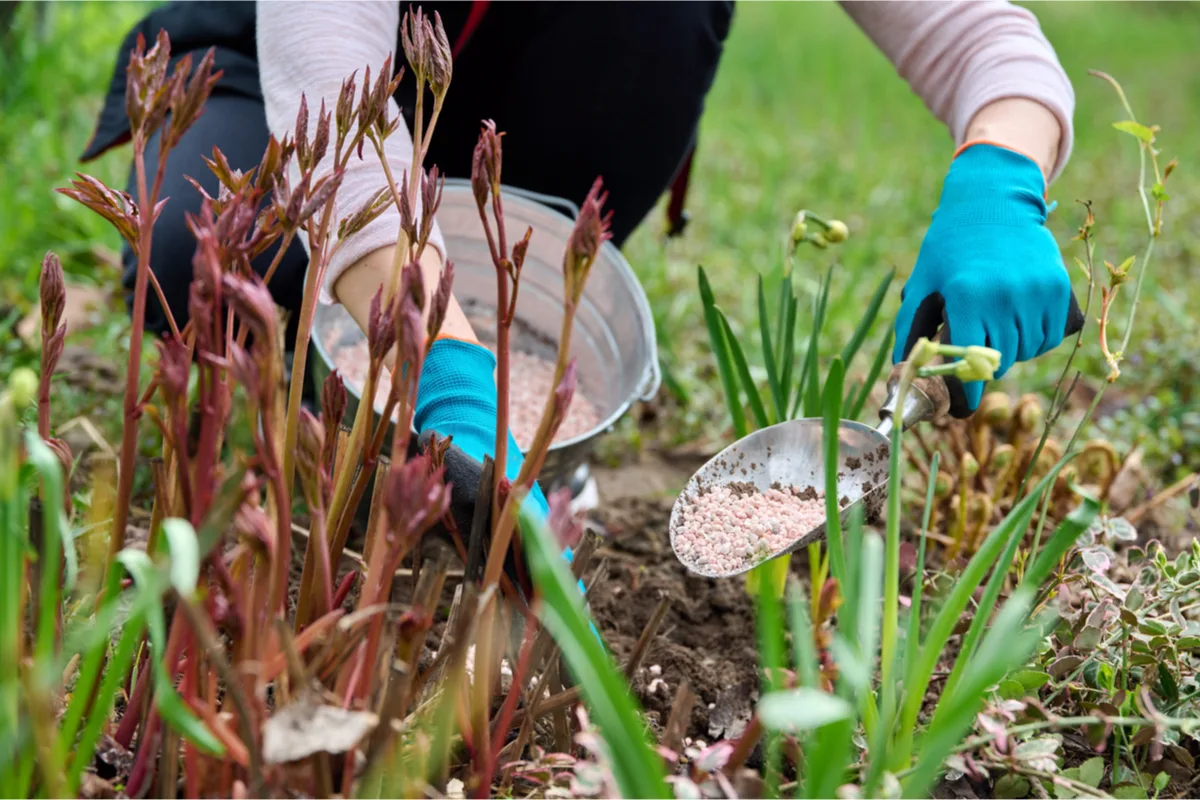
There’s a lot of variation in the slow release fertilizers available on the market, so please follow the instructions on the packaging for the right quantity. This will often vary depending on the size and age of your plant, on whether it’s potted or in a garden bed and even depending on your climate and amount of precipitation you get.
The advantage of the slow release organic nutrient fertilizer is its extended availability throughout the growing season. In other words, your peony won’t be inundated with a feast as soon as you apply the feed, but it will have access to nourishment all through the blooming season.
Horticulturists at the University of Illinois warn against overfertilizing peonies. That’s because too much nitrogen fertilizer will stimulate foliage growth, which has the side-effect of reducing the number of blooms.
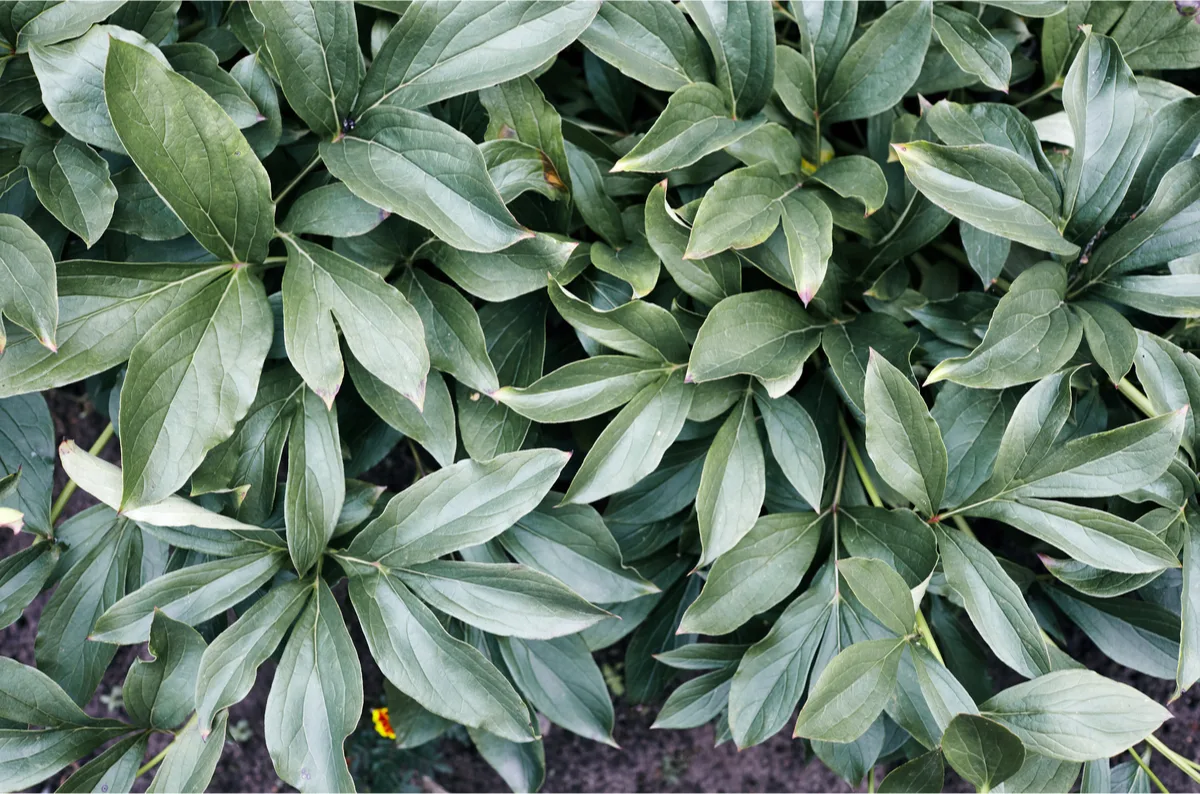
You can recognize a high-nitrogen fertilizer by reading the NPK label.
All fertilizers have three bold numbers printed on their packaging. The first number is the percentage of nitrogen (N), the second number is the percentage of phosphate (P) and the third number is the amount of potash (P).
For peonies, look for a fertilizer that has a lower first number. A 5-10-10 blend, for example, will be low in nitrogen.
This slow release fertilizer from Lily Miller has an ideal NPK ratio for peonies of 4-10-10.
The same experts recommend using a fertilizer with a higher phosphate content (indicated by a higher middle number). Maintaining adequate phosphorus levels in the soil helps with the development of healthy and vigorous roots.
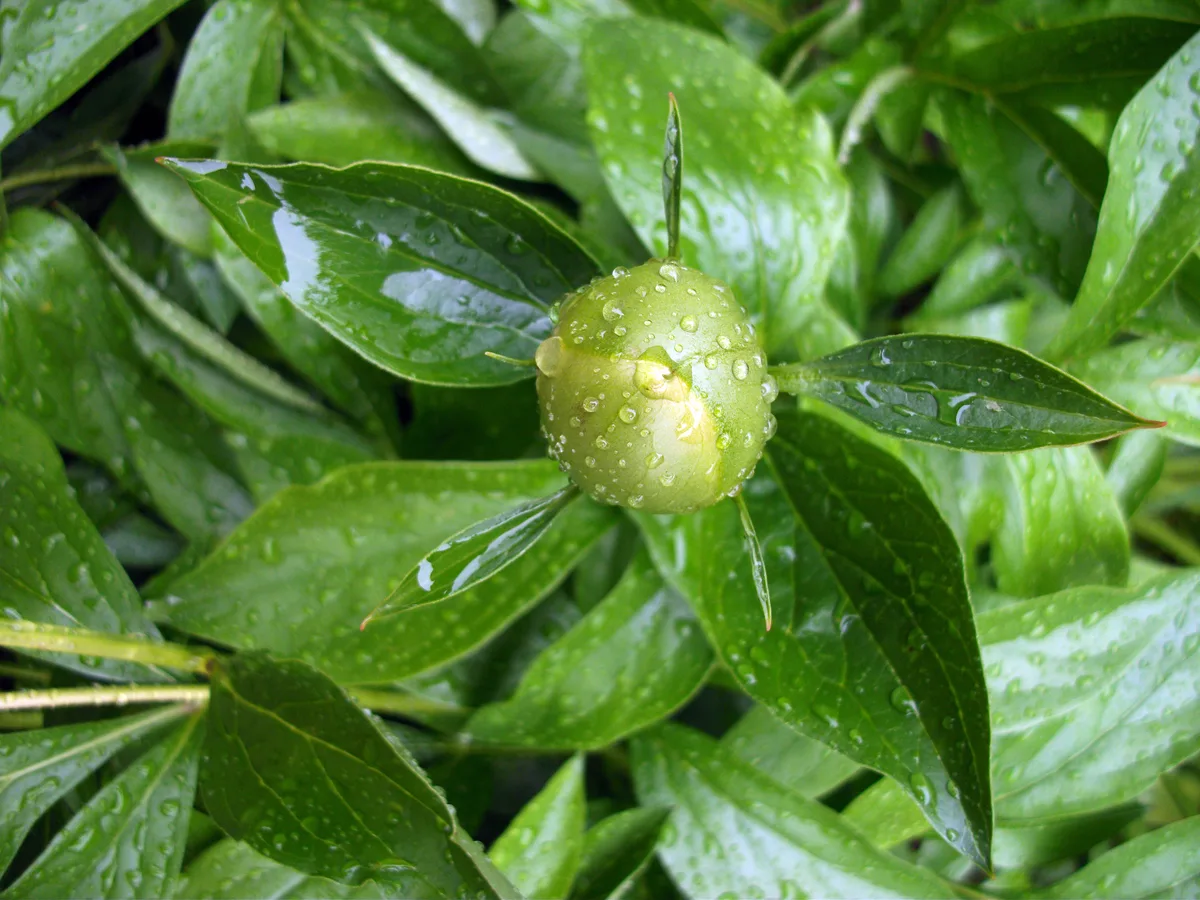
You can also use a universal granular fertilizer, a bulb fertilizer or even a rose fertilizer if you already have them.
To make sure you’re using an organic fertilizer, look for the for products that have the OMRI seal (Organic Materials Review Institute) and are safe for organic gardens.
This fertilizer from Good Earths Organics is OMRI certified and is ideal for fertilizing peony plants in spring.
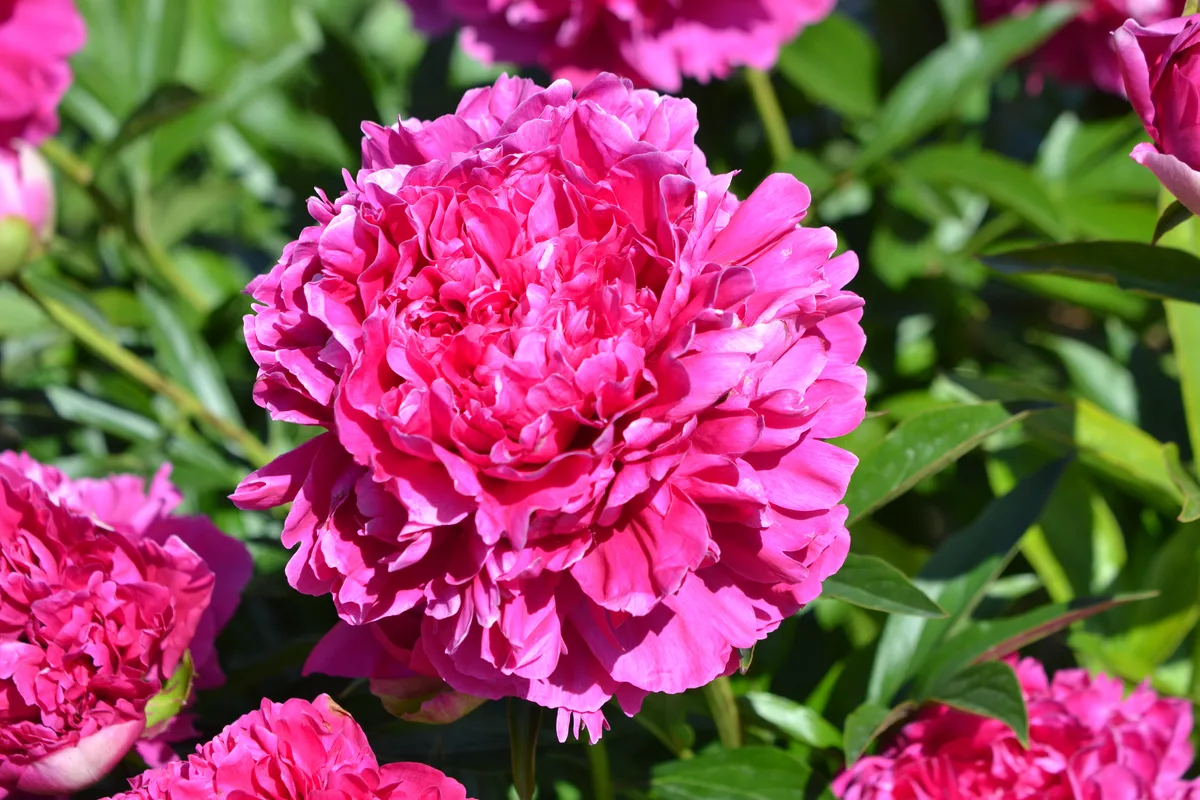
Should I use manure to fertilize my peonies?
You can use a combination of compost and manure as a fertilizer. Although some growers swear by the results of feeding peonies with cow manure, the American Peony Society recommends avoiding manure, especially near the stems of the plant, as it has been linked with the development of botrytis (an aggressive fungus that produces gray mold blotches on stems and blooms).
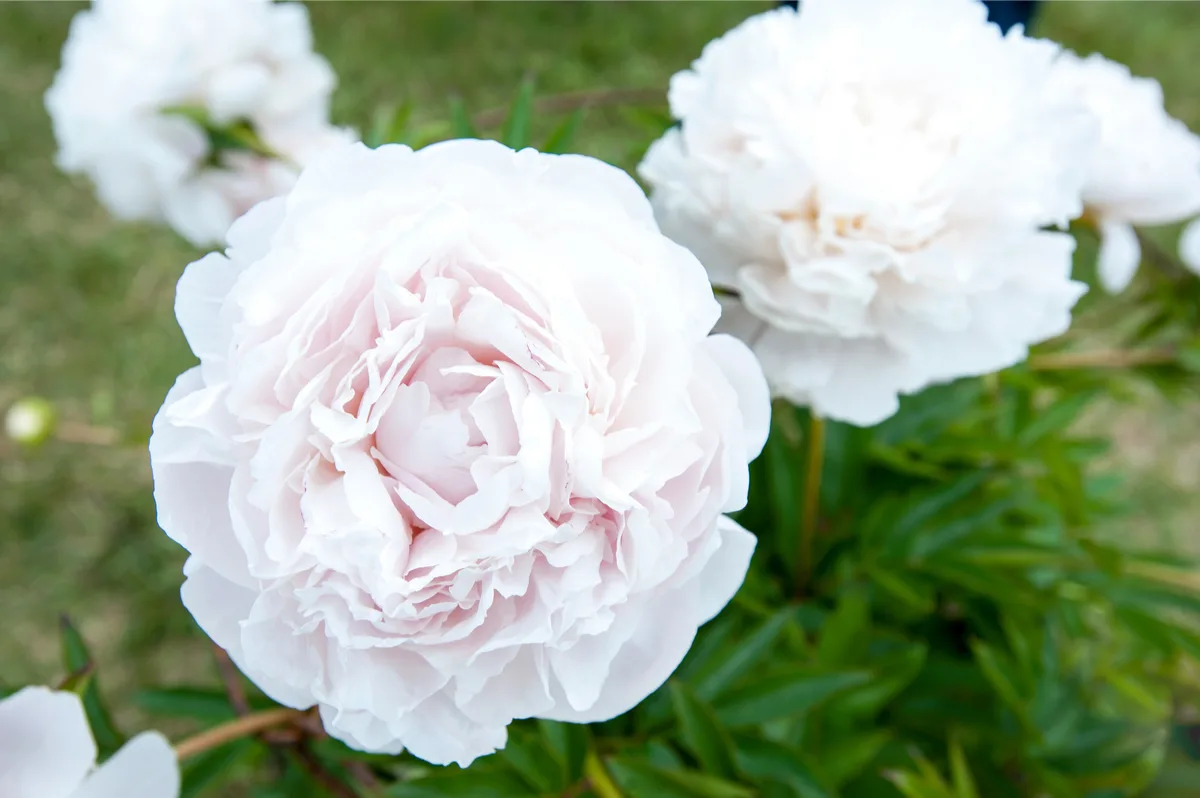
Can I use water soluble fast-acting fertilizer for my peony plant?
Peony plants only produce one set of leaves per year, and once they’re gone, they’re gone. So you’ll want to protect this foliage as much as possible throughout the season. Quick release water soluble synthetic fertilizers may damage the foliage by burning it and turning it yellow.
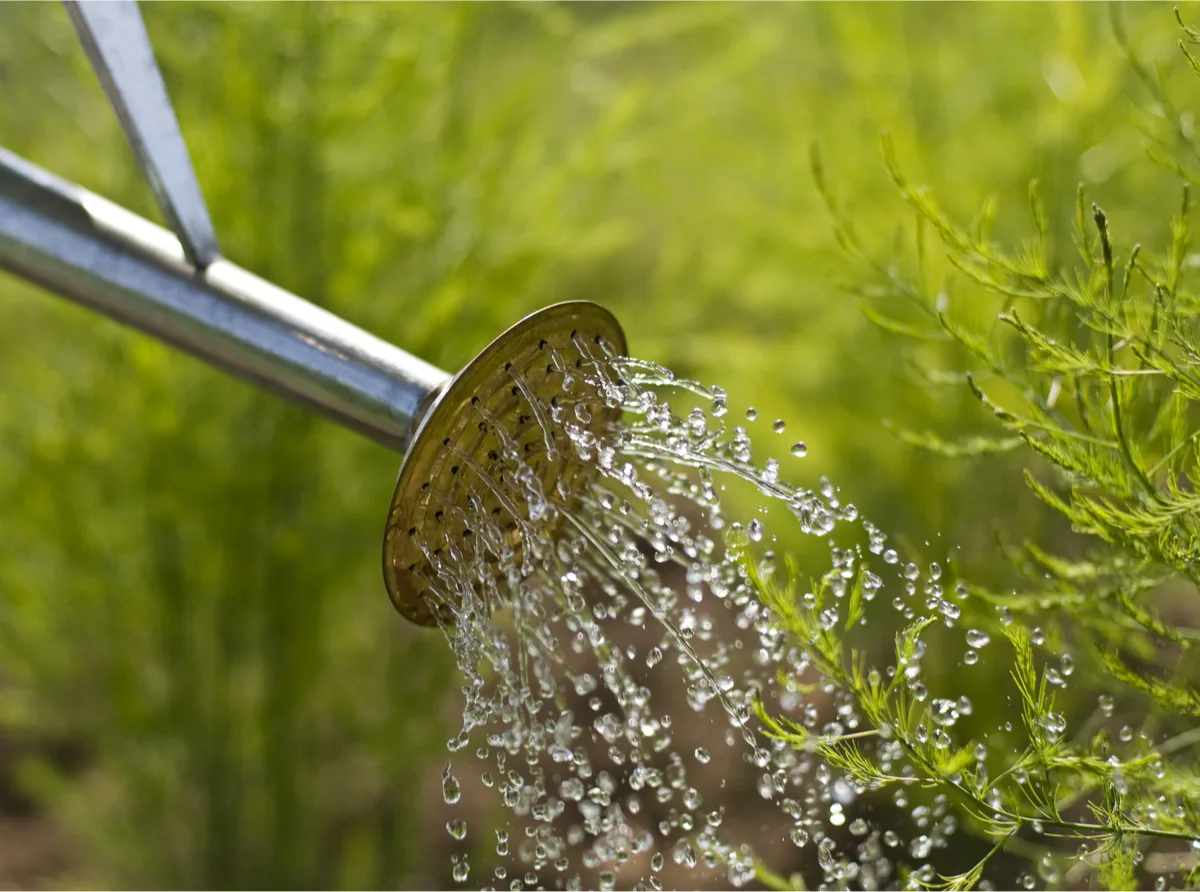
How about feeding peonies with bone meal?
Bone meal encourages strong root development, so it’s better applied in the fall, when you want to get the plant strong and ready for overwintering. You can also apply bone meal really early in the spring before any foliage has emerged.
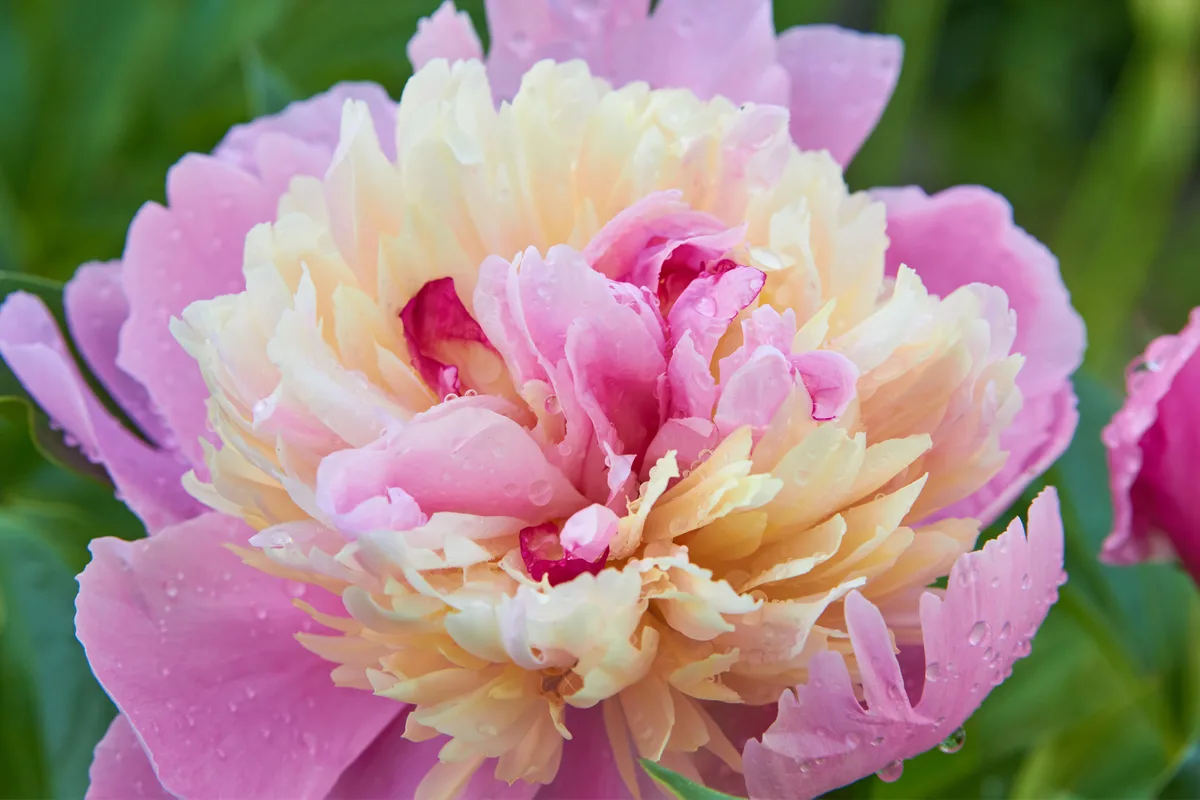
A few extra tips on the best practices of fertilizing peonies
If your peonies have been mulched to protect them from the cold temperatures in winter, you should remove the layer of mulch before you add any fertilizer.
Once you have fed your peonies in spring, you should add fresh mulch to conserve moisture and keep the soil temperature cool and even throughout the growing season.

Always apply the fertilizer around the drip line of the foliage crown (the area right below the outer leaves). Never apply it directly on the crown of the peony or too close to the stems.
Don’t skip the step of working the fertilizer into the ground. If you just leave it floating on top of the soil, it will take longer to break down and may wash away in heavy rain or with heavy hose watering.
For ease of measurement, you can repurpose one of your smallest measuring cups for garden use only. This will make it easier to keep track of the quantity of granules you’re using.
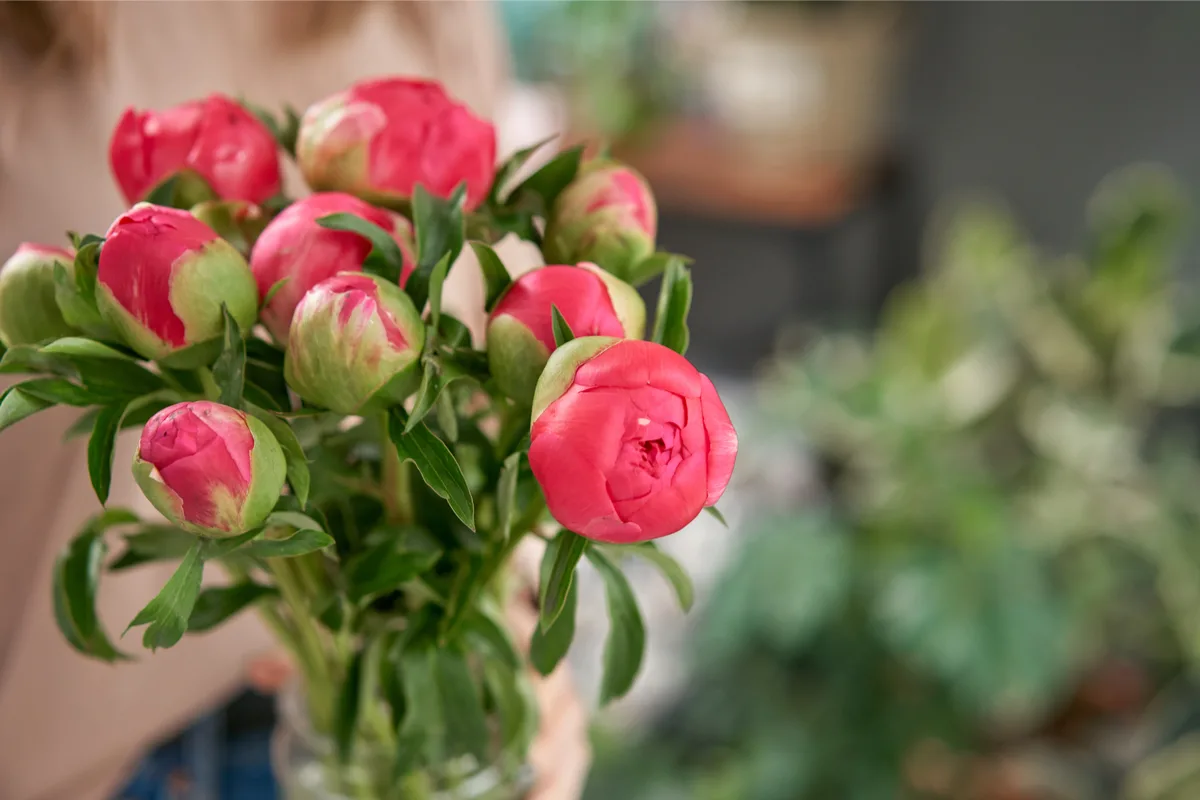
Peonies dislike having their roots disturbed in the spring, so avoid this as much as possible. The only reason to handle peony roots is when you divide them in the fall.
Speaking of dividing and replanting peonies, you should never apply fertilizer directly on the roots of a new transplant. Instead, you should add rich compost to the bottom of the planting hole before you add the new plant.
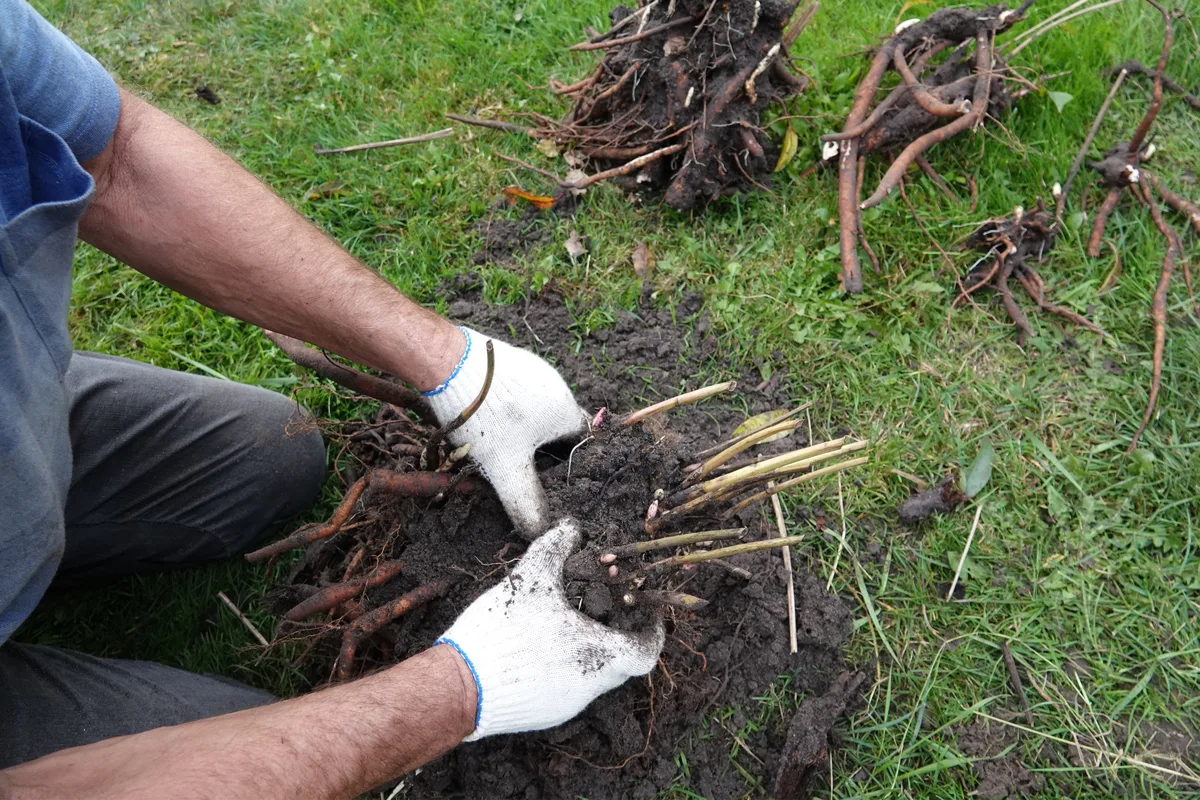
If your peonies have a poor blooming season, don’t jump to fertilize them by default. There are other factors that you can check and change first: your peony might have been planted too deep, it may be too young or it may need more sun.
We hope this was a useful guide on how to fertilize your peonies for bigger and better blooms. When it comes to fertilizer, remember that less is more.

